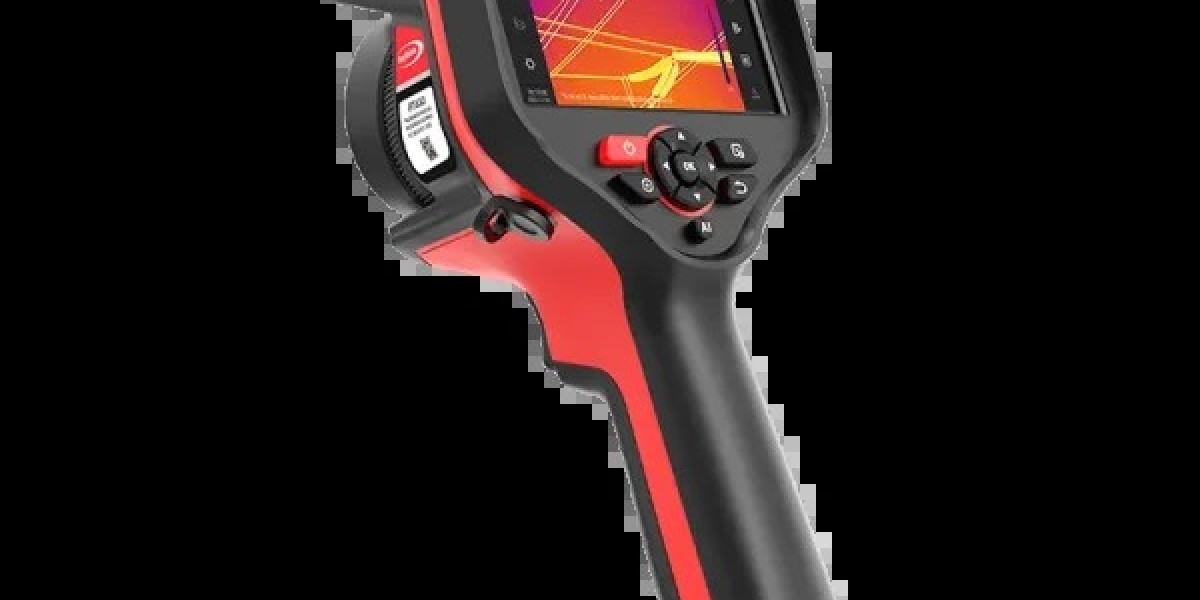Have you ever wanted to see the world in a different way? Imagine being able to detect hidden issues, ensure safety, or just observe the thermal environment around you. That's exactly what a professional infrared camera makes possible. It’s about gaining information that's not visible to the naked eye. Thermal imaging reveals details you can't see with regular vision. Let's examine what makes these cameras so valuable.
Professional Infrared Camera: Detecting Heat for Practical Applications
Let's define what a professional infrared camera actually is. Simply put, it's a device that detects infrared radiation, which is heat. Unlike standard digital cameras that capture visible light, these instruments detect thermal energy. Objects emit infrared radiation based on their temperature. The camera converts this radiation into a visual image, representing temperature differences with colors.
This isn't just a novelty. These cameras are essential tools across various industries. They're used in building inspections, medical applications, industrial settings, and even for environmental observation. They help professionals see hidden details, enabling faster problem diagnosis, preventive actions, and improved safety. Essentially, a professional infrared camera is your tool to visualize the thermal world, revealing details not visible by light alone.
Advantages of Professional Infrared Cameras
You might be aware of less expensive thermal cameras for personal use. However, there is a significant difference between these basic devices and a professional infrared camera. Think of it like the difference between entry-level and high-performance tools – both serve a purpose, but with vastly different capabilities.
l Enhanced Image Clarity:Professional cameras feature higher resolution detectors. This results in clearer and more detailed thermal images. You can distinguish subtle temperature variations, not just broad temperature ranges.
l Improved Detection Sensitivity:They can detect very small temperature changes. This is important in applications where minor variations are significant, such as identifying overheating electronic components.
l Accurate Temperature Measurement:Professional models are calibrated for precise temperature readings. This is critical for quantitative analysis in scientific, engineering, and medical fields.
l Robust Design and Durability:Designed to withstand demanding environments like construction sites, factories, and outdoor locations. They are built to last.
l Advanced Functions and Software:These include features like radiometric data capture, video recording, reporting tools, and system integration. It's about not just seeing heat, but also analyzing and effectively using the collected data.
In summary, if you require reliable, precise, and detailed thermal imaging results, a professional infrared camera is necessary. The investment reflects the significantly increased capability you gain.
Diverse Applications of Professional Infrared Cameras
Where are these thermal vision tools actually used? The range of fields benefiting from professional infrared cameras is extensive. Let's look at some examples.
1. Building Inspections: Identifying Structural and Energy Issues
Are you concerned about your building's energy efficiency or hidden structural problems? Professional infrared cameras are valuable for building inspectors. They can:
l Detect Insulation Deficiencies:Cold areas on walls indicate heat loss, increasing energy costs. Thermal cameras pinpoint these areas precisely.
l Locate Water Intrusion:Moisture appears as cooler regions. Inspectors can trace leaks inside walls and under floors without destructive investigation.
l Identify Electrical Overloads:Overheating wires pose fire risks. Thermal cameras detect overloaded circuits and loose connections before they become dangerous.
2. Industrial Maintenance: Preventing Equipment Failure
In industrial operations, downtime can be costly. Professional infrared cameras help maintain continuous operation by:
l Monitoring Machine Health:Overheating in bearings, motors, and pumps can be detected early, preventing breakdowns and production stops.
l Inspecting Electrical Systems:Similar to building inspections, thermal cameras allow for safe, non-contact inspection of live electrical panels to identify overheating components.
l Checking Furnace Linings:In high-temperature processes, damaged furnace linings can lead to structural damage. Thermal cameras identify thin or damaged areas, preventing major failures.
3. Electrical System Checks: Ensuring Safety and Reliability
Electricity is crucial but also presents hazards. Professional infrared cameras are vital for electrical safety assessments by:
l Detecting Circuit Overloads:Hot spots indicate circuits operating beyond their capacity. Early detection allows for corrective action to prevent fires.
l Finding Loose Electrical Connections:Loose connections increase resistance, generating heat. Thermal cameras quickly highlight these potential ignition points.
l Inspecting Power Distribution Equipment:Critical components like transformers require regular monitoring. Thermal imaging provides a safe and efficient method to assess high-voltage equipment.
4. Medical and Veterinary Diagnostics: Temperature as an Indicator of Health
Temperature patterns can provide insights into health conditions. Professional infrared cameras are used in:
l Temperature Screening:Mass temperature screening during outbreaks can quickly identify individuals with elevated body temperatures.
l Circulatory Assessment:Temperature differences in extremities can indicate circulatory issues. Thermal imaging can assist in diagnosis.
l Animal Health Monitoring:Detecting inflammation, injuries, or infections in animals, especially useful in veterinary care for large or less cooperative animals.
5. Security: Enhanced Visibility in Low Light
Thermal vision is effective in low-light or no-light conditions. Professional infrared cameras are valuable for:
l Surveillance and Night Operations:Detecting people and objects in complete darkness. Important for border security, search and rescue, and general security.
l Crime Scene Analysis:Detecting heat signatures at crime scenes, even after daylight hours, to identify recent activity.
l Search and Rescue:Locating individuals in difficult terrain or low visibility, as heat signatures are detectable even through vegetation.
Conclusion
In conclusion, professional infrared cameras are powerful instruments with diverse applications. They are essential tools across numerous industries, from construction to medicine and beyond. They enable professionals to identify problems, improve efficiency, and enhance safety through thermal visualization. As technology advances, thermal imaging is set to become even more integral in various fields. The future of numerous industries will likely depend increasingly on thermal insights.









